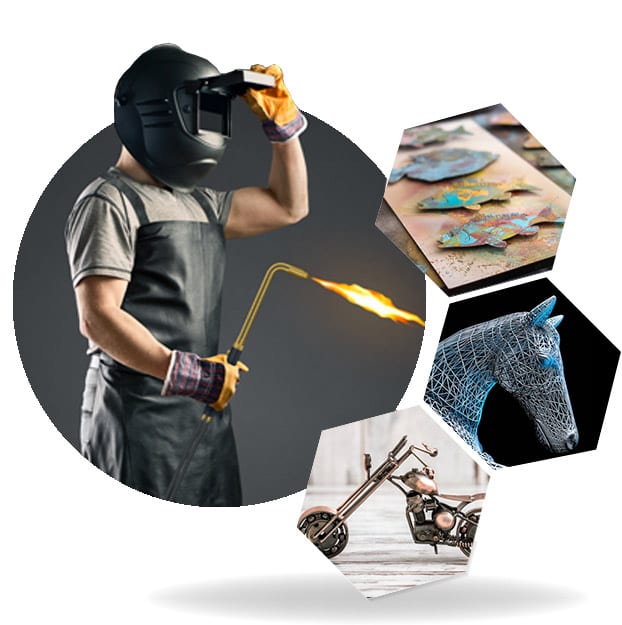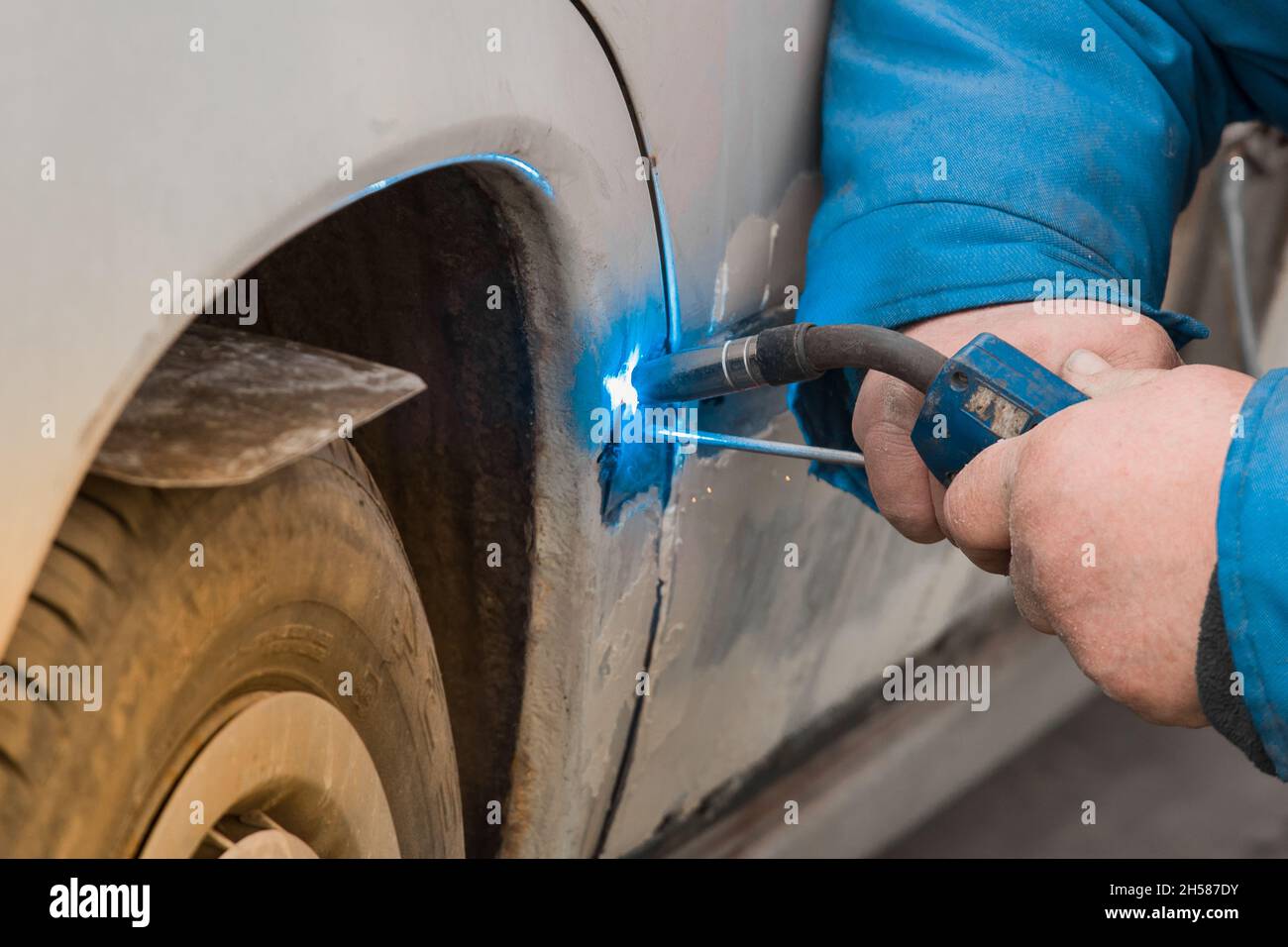Typical Welding Fixing Issues and How to Address Them Efficiently
Welding repair services frequently experience a series of problems that can threaten the integrity of the end product. Usual issues include poor infiltration, porosity, and misalignment, among others. Each problem presents one-of-a-kind challenges that require certain techniques for resolution. Comprehending these problems is necessary for welders intending to enhance their end results and abilities. This conversation will certainly explore these typical welding repair service concerns and efficient techniques to resolve them.
Poor Infiltration
Poor infiltration happens when the weld metal stops working to totally fuse with the base product, resulting in weak joints and potential architectural failings. This concern commonly comes from not enough heat input, incorrect electrode angle, or incorrect welding speed. Welders may run into inadequate penetration due to a mistake of the necessary parameters for a certain product thickness or type. In addition, contamination on the base product's surface area can prevent efficient bonding, exacerbating the trouble. To address insufficient penetration, welders need to ensure suitable setups on their equipment and keep a tidy job surface. Normal evaluation of welds is recommended to recognize any type of shortages early, permitting for prompt adjustments and the avoidance of jeopardized structural integrity in bonded assemblies.
Porosity
Porosity is a common issue in bonded joints that shows up as tiny gas bubbles trapped within the weld metal. This issue can compromise the stability of the weld, leading to minimized toughness and potential failing under stress. Welding. Porosity usually develops from contamination, moisture, or incorrect welding strategies, which enable gases to escape right into the molten weld swimming pool. To attend to porosity, welders must ensure proper surface prep work, keep a clean functioning environment, and use ideal welding parameters. Additionally, choosing the appropriate filler product and protecting gas can reduce gas entrapment. Normal inspection and testing of welds can help determine porosity early, ensuring timely rehabilitative activities are taken, consequently preserving the quality and reliability of the welded framework
Imbalance
Imbalance in welding can occur from various aspects, consisting of incorrect setup and thermal development. Understanding the source is vital for effective resolution. Several correction methods are readily available to realign elements and ensure structural stability.
Sources of Misalignment
Welding misalignment often comes from a range of underlying concerns that can jeopardize structural integrity. One key reason is inappropriate fit-up of parts before welding, which can result in gaps and irregular surface areas. Variants in thermal expansion during the welding process can additionally lead to distortion, particularly if the products being signed up with have different coefficients of development. Furthermore, inadequate fixturing and securing may fall short to hold components securely in position, bring about motion throughout welding. Poorly conserved equipment, including welding machines and devices, might present inconsistencies in the weld bead, further adding to imbalance. Driver error, stemming from inadequate training or experience, can additionally play a considerable role in developing misaligned welds.

Modification Methods Available
Addressing imbalance efficiently requires a combination of restorative strategies customized to the particular problems handy. One typical approach is making use of components or jigs to hold components in the correct position throughout welding, making sure regular placement. In addition, pre-heating the materials can help in reducing distortion and boost fit-up. For significant misalignment, mechanical adjustment strategies, such as using hydraulic jacks or clamps, can be utilized to fix the setting prior to welding. Post-weld heat therapy may also be necessary to ease anxieties triggered by imbalance. Mindful inspection and modification throughout the arrangement phase can avoid misalignment problems from ending up being significant troubles, promoting a smoother welding process and enhancing overall structural integrity.
Distortion
Distortion is an usual difficulty in welding that can emerge from different factors, including uneven cooling and heating. Understanding the reasons of distortion is necessary for applying reliable prevention strategies. Addressing this issue not only boosts architectural integrity but also enhances the total top quality of the weld.
Reasons for Distortion
When based on the intense heat of welding, products typically go through adjustments that can lead to distortion. This phenomenon largely develops from thermal growth and tightening throughout the welding process. As the weld area warms up, the product broadens; upon air conditioning, it gets, which can produce internal tensions. In enhancement, irregular home heating throughout a workpiece can exacerbate these anxieties, causing warping or bending. The kind of product likewise plays a considerable duty; steels with varying thermal conductivity and coefficients of growth may react in a different way, leading to unpredictable distortions. Inadequate joint layout and insufficient fixturing can add to imbalance throughout welding, enhancing the probability of distortion. Recognizing these reasons is vital for reliable welding fixing and avoidance strategies.
Avoidance Techniques
Effective prevention strategies for distortion throughout welding emphasis on controlling warmth input and making sure appropriate joint design. Maintaining a constant heat input assists to minimize thermal expansion and contraction, which can lead to distortion. Utilizing methods such as preheating the work surface can also lower the temperature level gradient, advertising uniform heating. Furthermore, picking proper joint styles, such as T-joints or lap joints, can boost security and reduce anxiety focus. Executing appropriate fixturing to safeguard the work surfaces in area better aids in preserving alignment during the welding procedure. Staggered welding sequences can distribute warmth much more uniformly, stopping local distortion. By applying these strategies, welders can substantially reduce the likelihood of distortion and enhance the general top quality of their welds.
Cracking
Cracking is a common problem experienced in welding fixings, frequently resulting from numerous variables such as improper air conditioning rates, material option, or inadequate joint preparation. The event of splits can considerably compromise the integrity of the weld, causing prospective failures throughout procedure. To address this problem, welders should first assess the origin, guaranteeing that materials are suitable and properly picked for the particular application. Additionally, regulating the air conditioning rate throughout the welding procedure is essential; quick cooling can cause stress and anxiety and result in fracturing. Proper joint design and prep work also add to lessening the danger. Implementing these methods can enhance weld top quality and toughness, inevitably reducing the chance of breaking in completed weldments.

Insufficient Combination
A substantial concern in welding repairs is incomplete fusion, which occurs when the weld steel does not appropriately bond with the base material or previous weld passes - Montana Mobile Welding and Repair Belgrade Fabrication. This flaw can result in weak points in the joint, potentially jeopardizing the integrity of the bonded structure. Factors adding to incomplete blend include not enough heat input, incorrect welding strategy, and contamination of the surfaces being signed up with. To resolve this concern find here properly, welders should ensure appropriate pre-weld cleaning and surface area preparation, along with change their welding specifications to attain appropriate penetration and blend. Regular examination throughout the welding procedure can likewise aid recognize incomplete combination early, enabling for prompt rehabilitative steps to enhance the general top quality of the weld
Overheating
While welding repair work can improve architectural honesty, overheating provides a significant challenge that can result in product degradation. Too much warm throughout welding can modify the mechanical homes of metals, causing reduced toughness, increased brittleness, and warping. This sensation is specifically crucial in high-stress applications where structural reliability is paramount. Identifying overheating can entail aesthetic examinations for staining or distortion, as well as monitoring temperature during the welding process. To minimize the dangers associated with getting too hot, welders must employ suitable strategies, such as managing warm input, changing travel speed, and using appropriate filler products. Furthermore, applying pre- and post-weld warm therapies can assist restore product buildings and improve the overall top quality of the repair, guaranteeing lasting performance and security.
Often Asked Inquiries
What Are the Usual Signs of a Welding Defect?

How Can I Check My Welds for High quality?
To evaluate welds for quality, one can utilize aesthetic assessments, ultrasonic testing, and radiographic approaches. Each method ensures structural integrity, identifies issues, and confirms adherence to defined requirements, inevitably improving the reliability of the welded joints.
What Security Preventative Measures Should I Take While Welding?
When welding, one should focus on safety by wearing suitable individual protective equipment, guaranteeing proper air flow, securing combustible materials away, preserving a clean workspace, and knowing environments to stop accidents and injuries.
Can I Repair a Weld Without Remodeling the Entire Joint?
Repairing a weld without redoing the whole joint is possible, depending on the damages (Fabrication). Methods such as grinding, adding filler product, or using a welding procedure can successfully address details imperfections while preserving the bordering structure
What Tools Are Crucial for Effective Welding Repair Works?
Crucial tools for reliable welding repair services include a welding maker, cable brush, mill, safety gear, clamps, and filler materials. Each device plays an essential duty in making certain top quality and security throughout the repair service procedure. Porosity usually emerges from contamination, wetness, or incorrect welding methods, which allow gases to leave into the molten weld swimming pool. look at this website Improperly maintained devices, consisting of welding makers and devices, may present inconsistencies in the weld bead, further adding to misalignment. When subjected to the intense heat of welding, products typically undergo adjustments that can lead to distortion. Cracking is an usual concern come across in welding fixings, frequently resulting from various variables such as inappropriate cooling rates, product selection, or poor joint preparation. A considerable problem in welding repairs is insufficient fusion, which occurs when the weld steel does not appropriately bond with the base material or previous weld passes.